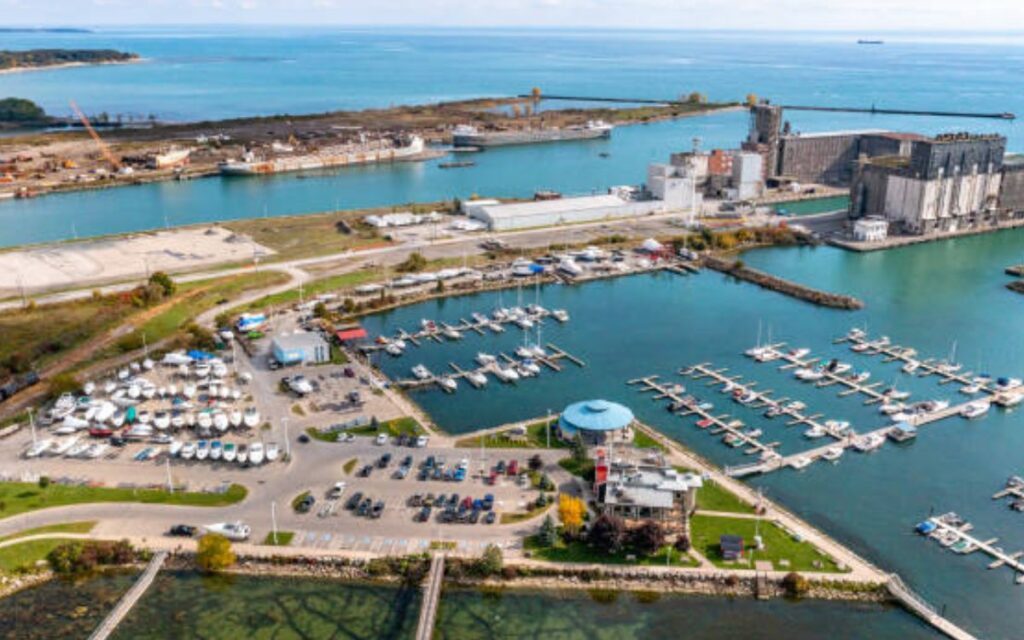
Of the 21 bypass events in 2023, the city says that 17 were secondary bypasses and four were primary bypasses without disinfection.
Hamilton City Council recently received a report from the Director of Water and Wastewater Operations Shane McCauley, showing that about 2.50 billion litres of wastewater bypassed various levels of treatment in 2023.
That amount is above the five-year average.
It was in 2019, a few months after the city’s infamous 24 billion litre sewage leak known as “Sewergate,” that council directed Hamilton Water to begin providing the Public Works Committee with an annual report on discharges into the environment.
The Public Works Department finally presented that report in May.
The city operates two wastewater treatment plants: the Woodward Wastewater Treatment Plant at 700 Woodward Avenue and the Dundas Wastewater Treatment Plant at 135 King Street in Dundas.
When discharges occur, the Woodward Plant releases into the Red Hill Creek and the Dundas Plant into the Desjardins Canal, both of which ultimately end up in the Hamilton Harbour.
All of the bypass events in the city in 2023 were at the Woodward Plant since the Dundas Plant redirects to Woodward whenever it exceeds capacity.
According to the city, there were 21 bypass events in 2023.
The number of events was also above the city’s five-year average.
The report also details the different types of treatment bypass that could occur.
The treatment levels, in order from least processes bypassed to most processes bypassed, are secondary treatment bypass, primary treatment bypass with disinfection, primary treatment bypass without disinfection, and preliminary treatment bypass.
A secondary treatment bypass means that only secondary and tertiary treatment processes like aeration, secondary clarification, and filtration, are skipped.
A primary treatment bypass with disinfection means that primary, secondary and tertiary treatment processes are skipped but the bypass has still received chlorine disinfection.
A primary treatment bypass without disinfection means that primary, secondary, and tertiary processes are skipped, and the bypass has not received chlorine disinfection.
Finally, a preliminary treatment bypass means that all processes at the wastewater treatment plant are bypassed.
Of the 21 bypass events in 2023, the city says that 17 were secondary bypasses and four were primary bypasses without disinfection.
The report notes that all bypass events were “the result of wet weather that generated flows greater than the wastewater treatment plant’s treatment capacity” and that they were all “promptly reported” to the Ministry of Environment, Conservation, and Parks Spill Action Centre and to Public Health Services.
The Public Works Department says that 2023 was wetter than normal with approximately 10 per cent more precipitation than the five-year average and high-intensity rainstorms concentrated in the spring and summer months.
Intense weather events can often lead to bypasses.
The report also notes that Hamilton is one of only two cities that features a live map of bypass and combined sewer outflow locations and a historical log of events on a dedicated webpage.
However, the site is currently offline due to the city’s recent ransomware attack.

Based in Hamilton, he reaches hundreds of thousands of people monthly on Facebook, Instagram, TikTok, and Twitter. He has been published in The Hamilton Spectator, Stoney Creek News, and Bay Observer. He has also been a segment host with Cable 14 Hamilton. In 2017, he received the Chancellor Full Tuition Scholarship from the University of Ottawa (BA, 2022). He has also received the Governor General’s Academic Medal. He formerly worked in a non-partisan role on Parliament Hill in Ottawa.






